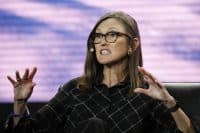
Sometimes, the stock market’s heightened volatility is predictable. Four times a year, on the third Friday of March, June, September, and December, stock options, stock index options, and stock index futures contracts expire. These are the last months of each quarter.
Due to this single-day trifecta, these Fridays are bearishly dubbed “triple witching” days.
This temporal regularity stands out from regular trading days because of the standardization of contracts. The Chicago Mercantile Exchange (CME) sets the expiration dates so it is easier to manage risk and boost liquidity. As the largest options and futures exchange, CME picked Friday as the week’s most convenient day for investors.
The expected regularity of triple witching days does create heightened volatility, but one that is more easily managed as quarterly contract expirations. This Friday, September 15th, will be the next triple witching day. Traditionally, the trading volume increases in the last hour of trading, otherwise known as the “witching hour” (3 – 4 PM EST).
Inherent Volatility in Derivatives Contracts
The whole point of having triple-witch days is to have controlled volatility. Specifically, investors hedge or speculate on the market’s direction across three types of derivatives: options contracts, index options contracts, and index futures contracts.
Options give the buyer the right (without the obligation) to buy or sell the underlying asset or indexes. In contrast, futures contracts give the buyer the obligation to buy or sell the underlying asset or indexes.
Example:
A farm plans to harvest corn in 6 months. It could then buy a futures contract for the present corn price to lock-in the price. This way, the farm is protected from losses if the corn price goes down in the meantime.
Theoretically, between these binary trading strategies, they both carry unlimited risk. In options, this comes from the selling side vs. the limited risk contained to paid premium for the buyers. However, as less flexible, futures carry heavier risks because price movements exert a heavier strain on the leveraged capital.
In other words, futures traders must top up daily losses, otherwise called margin calls. This dynamic magnifies both the risk and potential profits. Option premiums are typically smaller than futures margins, so options trading is safer, yet less profitable venture.
Why Does Triple Witching Lead to Volatility?
As derivatives contracts expire, they cease to be valid. In turn, traders close their positions by selling or buying the underlying assets. Consequently, large buy/sell walls are erected, which may lead to price volatility.
On top of that, some traders roll over their positions instead of closing them. To do that, they sell expiring contracts and buy new ones that expire in the next quarter. But, as they seek out new contracts at the best prices, this also leads to greater trading volume alongside volatility.
By the number of contracts (volume), equity speculation/hedging is typically the largest. Open interest denotes the total number of outstanding contracts that are yet to be closed.
If there is an inverse relationship between volume and open interest, such as increased volume and decreased open interest, this is typically a buying pressure sign indicating that the price of the underlying asset will go up.
In extraordinary market conditions, triple witching days are augmented as well. This happened in March 2020 amid the lockdown announcement, just ahead of the Fed’s market intervention. On that third Friday, March 20, all the major market benchmarks took heavy hits – S&P 500 (-4.3%), Dow Jones (-4.5%), and Nasdaq (-3.8%).
What to Expect from this Witching Friday?
Whether this Friday’s contract unloading becomes something special depends on the market sentiment. The present fear gauge, the Volatility Index (VIX), is hovering around 14, considered in the low range.
VIX prices in S&P 500 (SPX) options, making it a barometer of investor uncertainty. Higher ranges, close to or above 30, are usually accompanied by stock market downturns, as happened in March, which held the year’s first triple witching Friday on March 17.
June 16th Friday resulted in low market disturbance compared to regular trading days. With VIX in the same volatility range as the last time, one should expect a mini-crash that typically recovers after a week.
That said, September 13th is the Consumer Price Index (CPI) release date. If CPI exceeds the forecasted 3.6% inflation rate, the Friday triple witching day may be more tumultuous than usual. After all, the Fed would return to hawkish mode, with more interest rate hikes on the table.
In turn, this would put additional strain on the already fragile banking system, making capital even more expensive for companies and citizens alike.
This article originally appeared on The Tokenist
Are You Still Paying With a Debit Card?
The average American spends $17,274 on debit cards a year, and it’s a HUGE mistake. First, debit cards don’t have the same fraud protections as credit cards. Once your money is gone, it’s gone. But more importantly you can actually get something back from this spending every time you swipe.
Issuers are handing out wild bonuses right now. With some you can earn up to 5% back on every purchase. That’s like getting a 5% discount on everything you buy!
Our top pick is kind of hard to imagine. Not only does it pay up to 5% back, it also includes a $200 cash back reward in the first six months, a 0% intro APR, and…. $0 annual fee. It’s quite literally free money for any one that uses a card regularly. Click here to learn more!
Flywheel Publishing has partnered with CardRatings to provide coverage of credit card products. Flywheel Publishing and CardRatings may receive a commission from card issuers.
Thank you for reading! Have some feedback for us?
Contact the 24/7 Wall St. editorial team.





